Description
The Future Circular Collider (FCC) ‘integrated programme’ consists of an initial electron-positron collider FCC-ee, which is followed by a proton-proton collider, FCC-hh. This integrated programme is well matched to the current scientific landscape after 15 years of LHC operation. The proposed staging takes into account: (1) the physics priorities as developed and stated by EPPSU 2013 and 2020; and (2) the relative technology readiness and costs of FCC-ee and FCC-hh.
Both FCC-ee and FCC-hh would be installed in the same 91 km circumference tunnel close to CERN, reusing all the FCC-ee civil engineering and much of the technical infrastructure for the subsequent FCC-hh, thereby maximising the return on investment and ensuring guaranteed physics deliverables along with the broadest and most versatile exploration potential of the intensity and energy frontiers. Taking advantage of a perfect four-fold superperiodicity, FCC-ee and FCC-hh each accommodate
four detectors. The two stages, FCC-ee and FCC-hh, are optimised so as to enable the widest possible physics programme, with ample complementarity and synergies between stage 1 and stage 2.
Key design ingredients of FCC-ee, such as a double-ring layout, top-up injection with a full-energy booster, crab-waist collision scheme, minimum vertical beta function, high-current operation, required positron production rate, and precise energy calibration were all demonstrated in routine use at several previous or presently operating colliders, including LEP, SLC, KEKB, PEP-II, DAΦNE, and SuperKEKB. The FCC-ee, thus, is technically ready for construction, and it can deliver 4 to 5 orders of magnitude higher luminosity per unit electrical power than the previous LEP collider. The ongoing technology R&D aims at further increasing its energy and operational efficiency, and at cost minimisation. A project implementation scenario has been developed and an analysis of the present territorial and environmental conditions indicate favorable prospects for construction. A socio-economic impact assessment integrating environmental aspects has revealed a positive net present value and a positive benefit-cost ratio, under conservative assumptions and implementation conditions. The project can therefore be considered sustainable from a socio-economic perspective. Dialogue with the public and host state authorities have started. All those activities presented are necessary prerequisites for the authorisation processes with the host states. Their anticipation facilitate convergence towards a credible implementation schedule and provides better planning security.
The FCC-ee collider with its injector also offers unique opportunities for numerous other branches of physics and science, ranging from the proposed production of true muonium to generate spatially coherent photon beams down to 0.1 Å wavelengths at several orders of magnitudes higher average and peak brightness than any existing or planned light source.
The three volumes of FCC Feasibility Study Report are available for download along with complimentary material.
